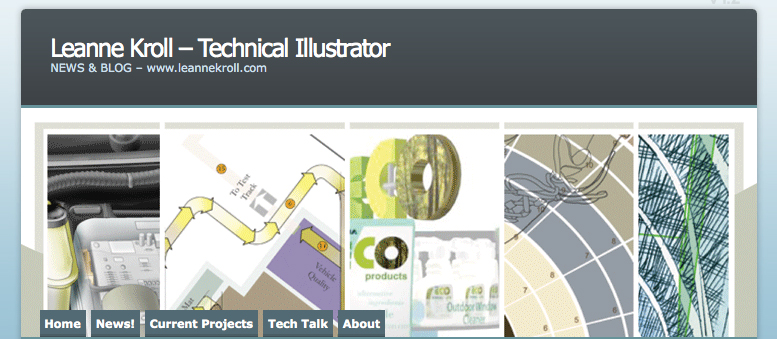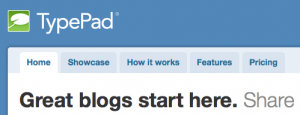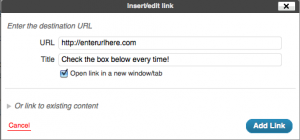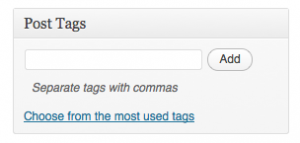So many people have blogs. Personal ideas out there for anyone to read. So, how do you create a blog that builds traffic for your business and why should you have one as the basis of your social media plan?
First, keep it professional. A blog is still a first impression of how you run your business and sometimes it may be the first website a potential client could hit, even before your website. Knowing that, keep it interesting and professional. Like an onion, slowly peel away a couple of layers at a time and make it interesting so they keep coming back.
Hesitant about calling it a “blog”? The stereotypical perception is that blogs are only read by friends and family and that it’s only an editorial site that dictates a certain point of view. Yes, that is how some people use their blog. But, your intent from the start should be to keep it professional. If you feel the title “blog” is not accurate to your business, why not call it something else, such as “News”, but power it through a standard blog site? That way, you can use the positive features of a blog to your advantage, while your client views you as a professional.
Why Blog for business? From a professional standpoint, a blog can be a very useful tool for marketing a company. Blogs are text driven and allow Google to find you easier with very searchable key words. A blog should be directly linked to your website and this will help with your features for search engine optimization. To keep it simple, blogging is just another way to be found online. If you are too busy (as most of us are nowadays) to update your website on a regular basis, at the very least your blog could be a source for your most recent work.
How do I blog professionally? If you’re afraid you just don’t know how to blog properly, below are a couple of tips to entice people to read your blog:
Be Yourself: Authenticity will draw a crowd and the best way to be authentic is to do what you do best. It’s a challenge to see so many other interesting things out there, but to really strive for excellence in what you are providing to a readership, it has to come from you.
Be Transparent: Allow a little more information about your business that shows what you stand for and what you have to bring to the table. To stand out against the crowd, we all need to be more transparent, but without giving too much away. Remember, your competitor’s are also online and could read what you are writing.
Be Accessible: Showing potential clients that you are involved in your industry and documenting ideas allows you to be accessible as a potential asset that they could use.
Add pictures: Everyone loves a pretty picture. It’s what gives your blog and your article life. It shows the character of what your business is and showcases your content. Create custom images and a custom layout based on the best template that reflects your company’s branding. If you can tie in a visual from your website to your blog and then twitter, facebook, etc. you will be able to brand your business across all digital media platforms. This in itself will provide a professional look to potential clients.
What to Blog About? What do you want your blog to say about your business? Is it featuring new projects that have just been completed, or is it writing industry articles that are more opinion pieces on how your business would solve a specific problem? From the start, you should have a direction that you want your blog to go and begin with that. From there, don’t be afraid to step outside the box that you have created and do something different from time-to-time. Perhaps add a completely new section on the blog a year into it. Anything you do that shows flexibility makes it more interesting for your readers to utilize as a resource.
Too much to say? Think you talk a lot and have too much to say? I know I do. If possible, always get a neutral third party to read your posts over before going live. Or, split subject matters into multiple posts to keep it short and interesting to readers. Doing this also creates more traffic back to your site if someone is truly interested in your subject matter. Win-win, right?
When Should I blog? How often to blog will depend on how much you have to say. The more the better, obviously to get traffic to your site. Don’t let your blog become stagnant because readers will lose interest and it will lose it’s potential. A major feature I would look for is a blog that I can write articles in advance when my workflow is slower and where I can schedule the posts to go live. That way, I’m not pressured in to turning around a new article every week or two. Ultimately, only post an article if you have something decent to say.
What Stats? A great feature on blogging sites are free stats that you can use to analyze the data of where your traffic hits are coming from. Depending on which blog website you choose, the stats you receive can vary. I would recommend you make sure you receive stats, that way you can effectively review, alter and improve your writings as you progress with your blog.
How do I start? First off, you need to choose the website that is going to give you the platform for your blog. There are a large number of free websites. The top features I look for are template design, available stats and ease of use. Some of the most popular are:
WordPress – My personal preferred, but also one of the most popular. Blogs are provided free of charge and managed by the developers of the WordPress software. The software includes custom design templates, integrated statistics, automatic spam protection and much more.
Blogger – A free weblog publishing tool from Google, for sharing text, photos and video.
Tumblr – A feature rich and free blog hosting platform offering professional and fully customizable templates, bookmarklets, photos, mobile apps, and social network.
Typepad – A premier blogging service. Create a blog in minutes – with stunning designs, reliable hosting, real-people tech support, and lots more.
Blogetery – Free weblog hosting with subdomains and instant activation. Offers revenue share, multiple template designs and plugins.
Blogsome – A host offering blogs based on the WordPress multi-user edition. Many design templates available.
Edublogs – It lets you easily create & manage student & teacher blogs, quickly customize designs and include videos, photos & podcasts.
Blog.com – A host service with free and paid plans available. Features include one-click publishing and photo albums.
Of course, there are so many other platforms, including paid options out there, as blogging has become very mainstream. Do your research and choose something that suits your business the best and is easy to use.
Little Things Matter. Additional features to think about when writing an article include:
Link it up. Links within your article to additional websites or images should open in a new window. The last thing you want to do is allow your visitor to get distracted reading another article and never make it back to your site. Opening your links in new windows allows them to always get back to your site.
Tag it. Tags should be added to each blog post to assist with your search engine optimization. Tags also allow someone on your hosted site (for example, WordPress) to search and find anything tagged with that keyword (ie. illustration).
Get a real URL. Most of these sites allow you to utilize a URL such as www.yourbusiness.wordpress.com. If possible, a more professional approach would be www.yourcompanywebsite.com/blog. Believe it or not, something this small reflects on your image as a business.
Link it now. Add links to your blog that allow your readers to find your website, twitter, Facebook, Linkedin and any other social media account. In return, also add on all your other social media sites a link that allows your readers to get to your blog.
Promote it. Part of your social media plan is using all avenues to promote anything new and exciting. Is a blog post on a new project exciting?! Heck ya! So, tweet it, blast it on Facebook and tell everyone on every social media platform you are on. That way, a larger audience will potentially read about it.
Respond to it. If someone took the time to comment on your post, respond to it. It shows a professional courtesy, no matter what the comment is.
No matter what, just start it! Get your blog up and running, brand it similar to your website, keep it real and keep it professional! Good luck!











